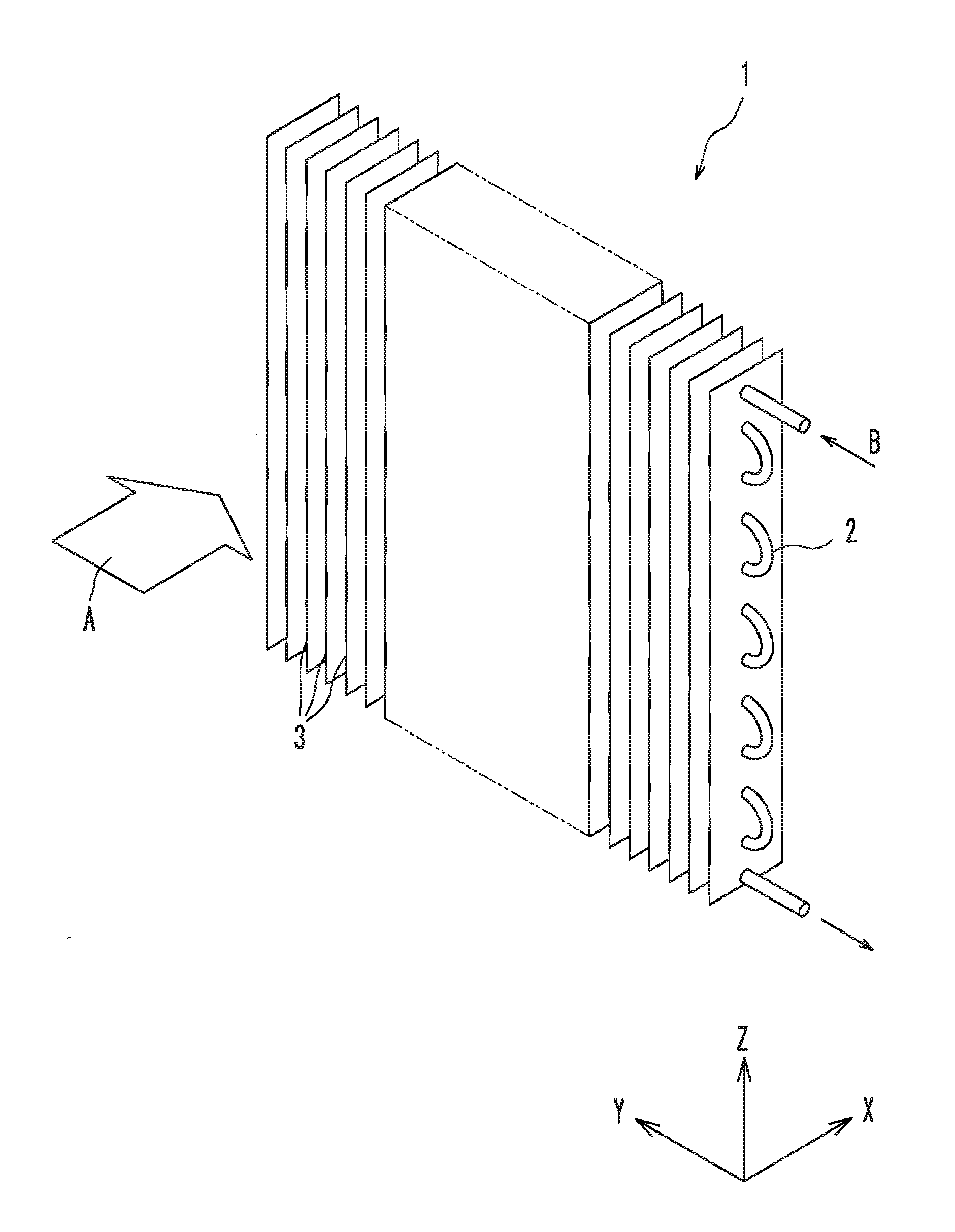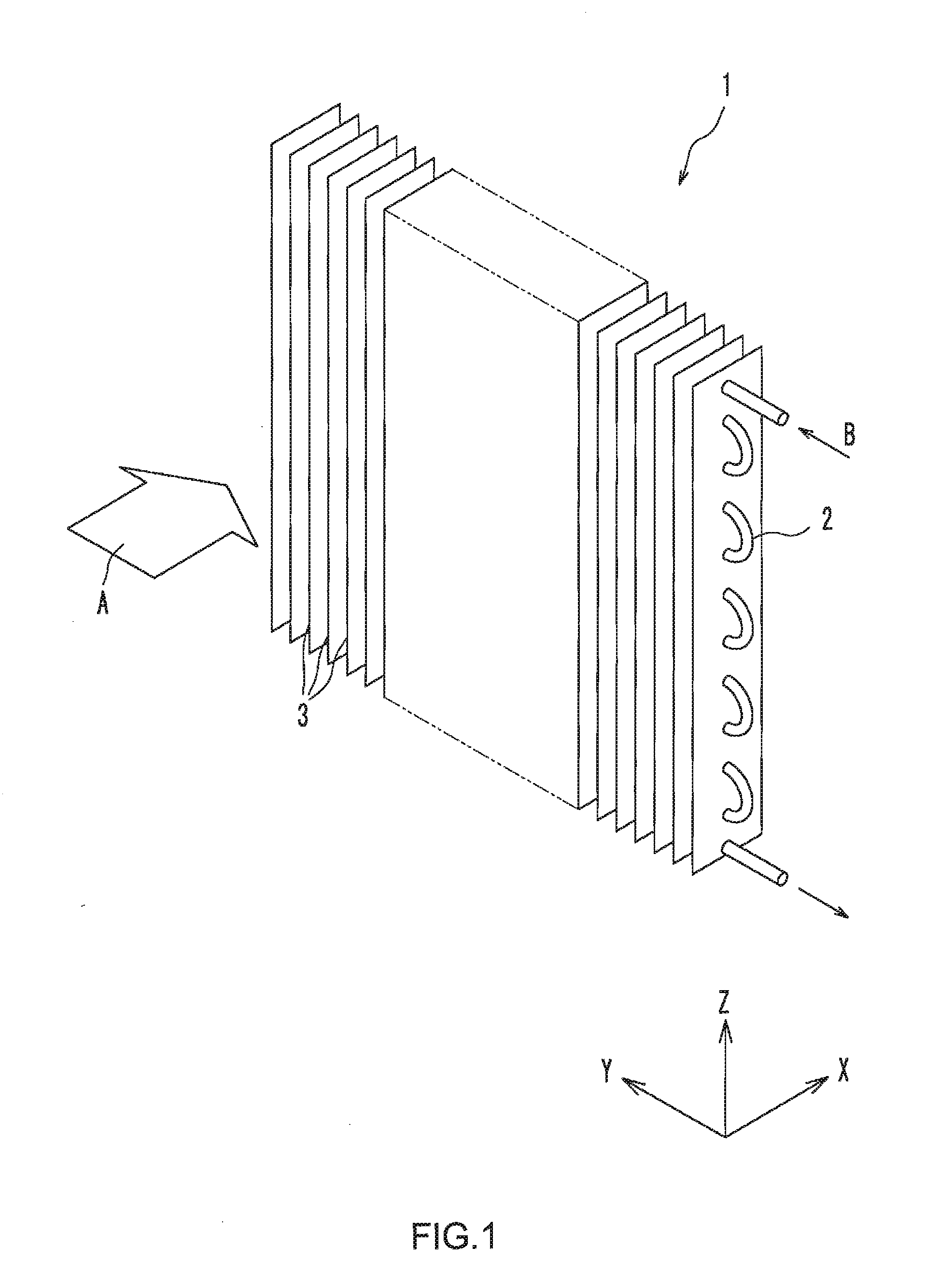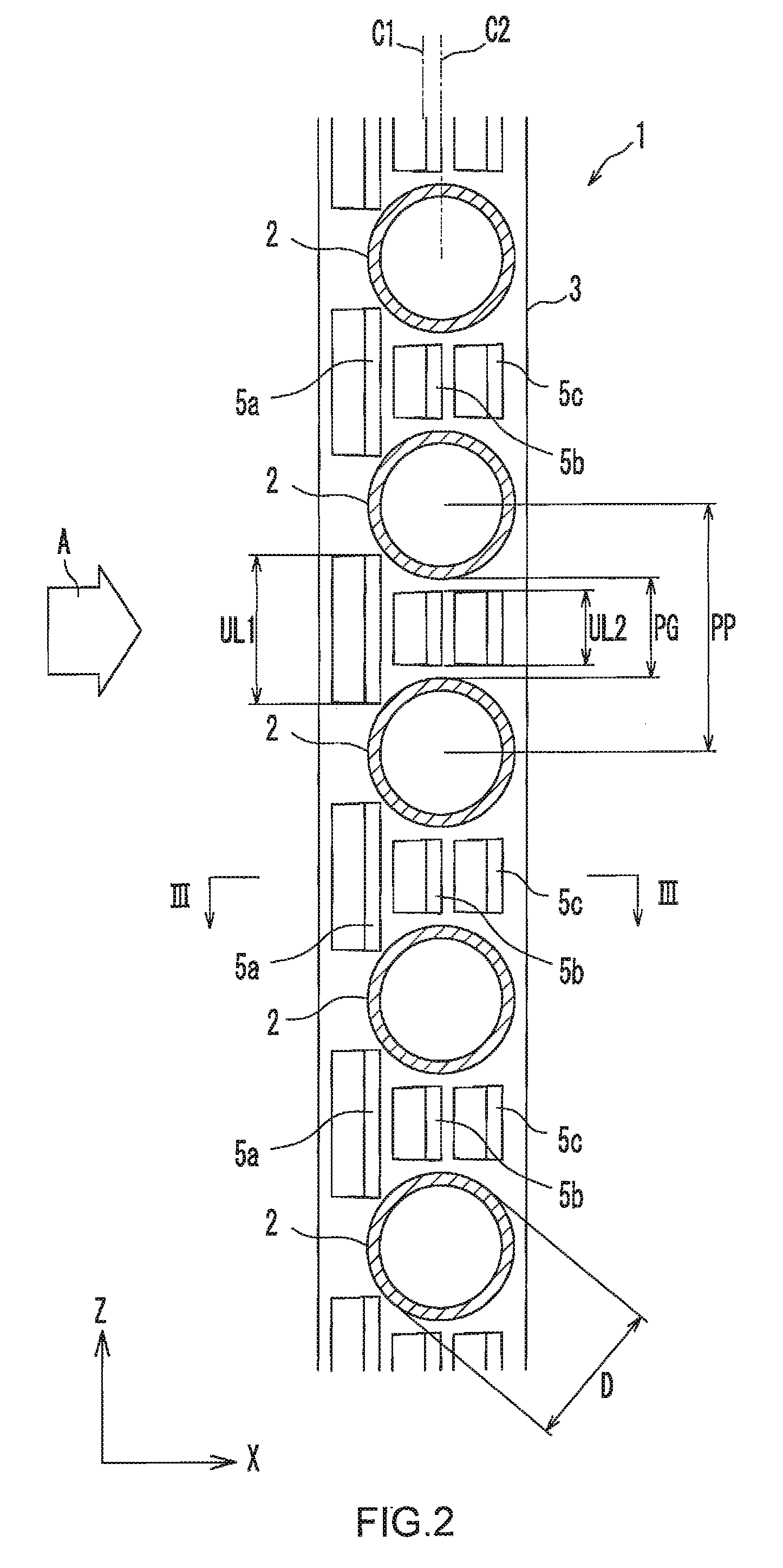Fin-tube heat exchanger
a heat exchanger and tube heat exchange technology, applied in the field of tube heat exchangers, can solve the problems of certain limitations of heat transfer coefficient improvement, and achieve the effect of improving heat transfer coefficient and convenient manufactur
- Summary
- Abstract
- Description
- Claims
- Application Information
AI Technical Summary
Benefits of technology
Problems solved by technology
Method used
Image
Examples
embodiment 1
[0037]As illustrated in FIG. 1, a fin-tube heat exchanger 1 according to the embodiment has a plurality of fins 3 arranged parallel to each other with a predetermined gap, and a plurality of heat transfer tubes 2 penetrating these fins 3. The heat exchanger 1 is for exchanging heat between a fluid flowing inside the heat transfer tubes 2 and a fluid flowing on the surface side of the fins 3 (the surfaces of the fins 3 when the outer surfaces of the heat transfer tubes 2 are not exposed, or the surfaces of the fins 3 and the heat transfer tubes 2 when the outer surfaces of the heat transfer tubes 2 are exposed). In the present embodiment, air A flows on the surface side of the fins 3, and refrigerant B flows inside the heat transfer tubes 2. It should be noted that the fluid that flows inside the heat transfer tubes 2 and the fluid that flows on the surface side of the fins 3 are not particularly limited. Each of the fluids may be either a gas or a liquid.
[0038]The fins 3 are formed ...
embodiment 2
[0067]In Embodiment 1, the cut-and-raised portions 5a-5c are formed to have a horizontal cross-sectional shape in a semicircular shape. However, the horizontal cross-sectional shape of the cut-and-raised portions 5a-5c is not limited to the semicircular shape. As illustrated in FIG. 7, a fin-tube the heat exchanger 1 according to Embodiment 2 is such that the horizontal cross-sectional shape of the cut-and-raised portions 5a-5c is formed in a semielliptic shape.
[0068]Specifically, each of the fins 3 of the heat exchanger 1 according to Embodiment 2 has cut-and-raised portions 5a-5c formed by cutting and raising portions of the fin 3 so as to be turned over from the upstream side toward the downstream side. The cut-and-raised portions 5a-5c are curved so that the horizontal cross-sectional shape tapers toward the upstream side, and are formed in a semielliptic shape. The rest of the configurations are the same as those in Embodiment 1 and the description thereof will be omitted.
[0069...
embodiment 3
[0073]As illustrated in FIG. 9, a fin-tube the heat exchanger 1 according to Embodiment 3 is such that the horizontal cross-sectional shape of the cut-and-raised portions 5a-5c is formed in a wedge shape.
[0074]Specifically, each of the fins 3 of the heat exchanger 1 according to Embodiment 3 has cut-and-raised portions 5a-5c formed by cutting and raising portions of the fin 3 so as to be turned over from the upstream side toward the downstream side. The cut-and-raised portions 5a-5c are curved so that the horizontal cross-sectional shape tapers toward the upstream side, and are formed in a wedge shape. It should be noted that the term “wedge shape” refers to a shape such as to continuously spread from the front edge to the rear edge. The rest of the configurations are the same as those in Embodiment 1 and the description thereof will be omitted.
[0075]In the present embodiment as well, the horizontal cross-sectional shape of the cut-and-raised portions 5a-5c is formed to taper toward...
PUM
 Login to View More
Login to View More Abstract
Description
Claims
Application Information
 Login to View More
Login to View More - R&D
- Intellectual Property
- Life Sciences
- Materials
- Tech Scout
- Unparalleled Data Quality
- Higher Quality Content
- 60% Fewer Hallucinations
Browse by: Latest US Patents, China's latest patents, Technical Efficacy Thesaurus, Application Domain, Technology Topic, Popular Technical Reports.
© 2025 PatSnap. All rights reserved.Legal|Privacy policy|Modern Slavery Act Transparency Statement|Sitemap|About US| Contact US: help@patsnap.com



